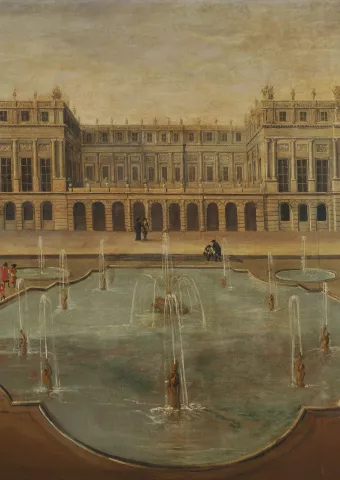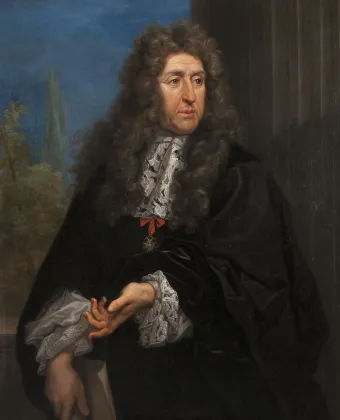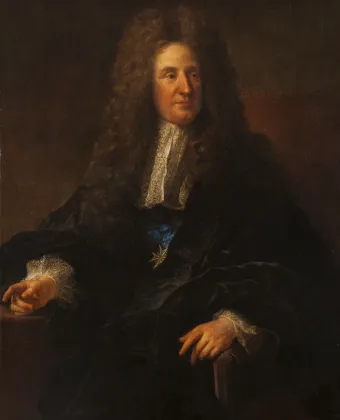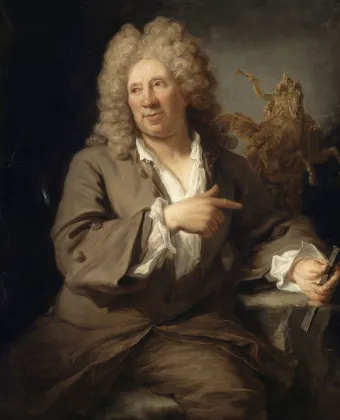Versailles was without doubt the last great work by this famous architect of the mid-17th century. After the Great Royal Entertainment in 1668, Louis XIV entrusted Le Vau, First Architect to the King since 1654, with the extension of the brick and stone palace built by his father Louis XIII. On the city side Le Vau built symmetrical wings around the forecourt in the same style as the stables and servants’ wings, but chose white stone to cover the original palace on the garden side. The work was referred to as the “Envelope” or the “New Palace ” to distinguish it from the “Old Palace”, built during the reign of Louis XIII. On the courtyard side the palace followed the French aesthetic of slate roofs, but for the new construction Le Vau preferred to use Italian-style roofs hidden behind a balustrade decorated with trophies and pots-à-feu. This style was copied and repeated on the wings by his successor Hardouin-Mansart.
Le Vau also built the first orangery at Versailles and the Menagerie in the Park. He began work on the Ambassadors’ Staircase and the decor in the royal apartments, but these were finished by François d’Orbay (1634-1697), his principal collaborator and brief successor, before the arrival of Hardouin-Mansart in 1675.
A man of money and power, Le Vau made a name for himself with the construction of a number of private mansions in Paris for rich parliamentarians (Lambert, Tambonneau, Hesselin) as well as châteaux.
The most famous – and most expensive – of these was Château de Vaux-le-Vicomte for Nicolas Fouquet, a financier and Minister of Finances. The construction was a small-scale version and foretaste of the future Versailles, since Fouquet had engaged Le Brun, Girardon and Le Nôtre as well as Le Vau. No private patron had ever employed royal artists with such grand results.
Before Versailles, Le Vau had worked for Louis XIV at Vincennes (the king’s and queen’s pavilions) as well as the Louvre and the Tuileries. Opposite the Louvre he built the Collège des Quatre Nations (now the Institut de France) in accordance with the wishes of Cardinal Mazarin. Here, as at Versailles, the architect used Italian decoration and design with a Classical aesthetic and a hint of the Baroque, which were characteristic of the mid-17th century.














